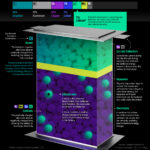Energy News Beat
The following content is sponsored by the EnergyX
What’s Inside a Lithium-Ion Battery?
Winning the Nobel Prize for Chemistry in 2019, the lithium-ion battery has become ubiquitous and today powers nearly everything, from smartphones to electric vehicles.
In this graphic, we partnered with EnergyX to find out how these important pieces of technology work.
Looking Inside
Lithium-ion batteries have different standards in various regions, namely NMC/NMCA in Europe and North America and LFP in China. The former has a higher energy density, while the latter has a lower cost.
Here is the average mineral composition of a lithium-ion battery, after taking account those two main cathode types:
Material% of Construction
Nickel (Ni)4%
Manganese (Mn)5%
Lithium (Li)7%
Cobalt (Co)7%
Copper (Cu)10%
Aluminum (Al)15%
Graphite (C)16%
Other Materials36%
The percentage of lithium found in a battery is expressed as the percentage of lithium carbonate equivalent (LCE) the battery contains. On average, that is equal to 1g of lithium metal for every 5.17g of LCE.
How Do They Work?
Lithium-ion batteries work by collecting current and feeding it into the battery during charging. Normally, a graphite anode attracts lithium ions and holds them as a charge. But interestingly, recent research shows that battery energy density can nearly double when replacing graphite with a thin layer of pure lithium.
When discharging, the cathode attracts the stored lithium ions and funnels them to another current collector. The circuit can react as both the anode and cathode are prevented from touching and are suspended in a medium that allows the ions to flow easily.
Powering Tomorrow
Despite making up only 7% of a battery’s weight on average, lithium is so critical for manufacturing lithium-ion batteries that the U.S. Geological Survey has classified it as one of 35 minerals vital to the U.S. economy.
This means refining lithium more effectively is critical to meeting the demand for next-generation lithium-ion batteries.
EnergyX is powering the clean energy transition with the next generation of lithium metal batteries with longer cycle life, greater energy density, and faster charging times.
Don’t miss your chance to transform the future of renewable energy. Invest in EnergyX Now.
The post Visualized: Inside a Lithium-Ion Battery appeared first on Elements by Visual Capitalist.
The post Visualized: Inside a Lithium-Ion Battery appeared first on Energy News Beat.







